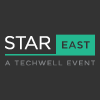STAREAST 2018

PRESENTATIONS
|
Continuous Testing vs. Test Automation: Three Key Differences
The past few years have brought a sea change in the way applications are architected, developed, and consumed—increasing both the complexity of testing and the risk of software failures. Given the trends that impact both architectures (cloud, microservices, and APIs) and processes (DevOps, agile, and continuous delivery), how can software testing keep pace with modern application delivery? Enter continuous testing. Wayne Ariola explores the three main differences between continuous testing and test automation. |

Wayne Ariola |
|
Devices and Desires: How Do Humans Experience Software?
We consume and still we desire more—more devices, more apps, more data, more bandwidth, more connectivity. The more we have, the more we want. We assume that to be true—those of us who work in the software industry. But is that true? To understand what is really required of our products, we need to design and test a pyramid of interlocking quality attributes that, together, make for an optimum experience. Isabel Evans discusses why and how we can evaluate UX and what is takes to deliver better UX to our customers. |

Isabel Evans |
|
DevOps Tools for Winning Agility
With a myriad of tools to choose from—open source, free, paid, and enterprise level—teams and organizations have seemingly endless options. Making the right tool decisions can impact the level of quality and success within DevOps projects. Kellyn Pot'Vin-Gorman discusses different tools, what tools work best together, and how—even in teams that are in silos—the right choices can make the difference between success and failure in DevOps implementations. |

Kellyn Pot'Vin-Gorman |
|
Elegant Test Weapons for a More Civilized Age
Software Engineering as a discipline is always evolving. The technologies and tools that were in vogue yesterday are passé today and gone altogether tomorrow. Despite this high churn, there are a number of skills that software testers, in particular, possess that are eternally useful. They cut across time and tools and even job titles. Melissa will help software testers look past technologies and titles to explore the skills that they may already possess that are in high demand. |

Melissa Benua |
|
Embedding Performance Engineering into the CI/CD Pipeline
A difficult challenge organizations face when adopting continuous integration/continuous delivery (CI/CD) is ensuring that every build has been evaluated for performance. Although most organizations do performance testing, how they do it and when they do it define their readiness for deploying in fast-paced environments. Anjeneya Dubey’s team faced similar challenges and found ways to embed performance engineering as part of their CD pipeline. To achieve this objective, they made changes to processes, technologies, and culture. |
Anjeneya Dubey |
|
Exploratory Testing: Learn to Do It like a Bloodhound
Let’s face it—dogs are born to sniff everything. Using their noses, they gather information from other dogs, people, and most everything. We teach dogs to use their noses to find bombs, predict seizures, locate cancer cells, detect drugs, and so much more. When dogs smell, they are not just recording an odor; they get an entire story. Although testers have fewer scent receptors than dogs, Susan Zampino says that we can learn how to gather information like a dog to drive our exploratory testing. |

Susan Zampino |
|
Five Things We’ve Learned from 100,000 Bug Fixes
[video:https://youtu.be/GRXNPt2IAyY width:300 height:200 align:right] |

Kristel Kruustük |
|
How to Test Serverless Cloud Applications
Cloud providers are now offering serverless technology, introducing significant changes to how applications are structured and, importantly, tested. The serverless cloud makes certain parts of testing serverless applications opaque. Glenn Buckholz explains the boundaries of each cloud provider’s black box service to expose what can and cannot be tested ahead of time, and what can be evaluated locally and what requires the cloud provider’s platform. |

Glenn Buckholz |
|
Influencing Stakeholders Using Fact-based Information
With all the open source tools available on the market it can be overwhelming as to which ones might meet your needs and which ones will work best in your environment to create a high performing team and metrics dashboard. Join Jennifer as she explains the relationship of data, your environment, and how a hub and spoke model can link all your different data sets and tools together. |

Jennifer Bonine |
|
Integration and Functional Testing Using Dockerized Dependencies
To emulate production-like conditions that cannot be tested on the unit level, many integration and functional tests need a realistic environment. However, performing these tests in a production-like environment is fraught with problems—test data management issues, tests that are difficult to execute repeatedly, and network traffic that causes long-running test execution times. Instead of having to deal with these problems and others, Irene Dhong employs Docker to simulate dependencies. |

Irene Dhong |


